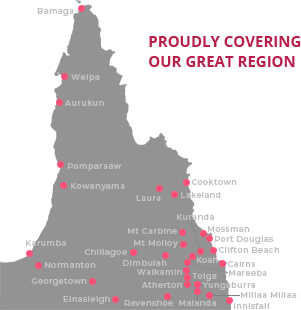On The Land
4 October, 2025
Flowering signals promising season
MANGO producers across the region currently are experiencing mixed results with crop tree flowering.

Australian Mango Industry Association deputy chairman and Paddy’s Green mango producer John Nucifora says that, to date, there has been mixed flowering levels across the region.
“Some producers have had an excellent flush of blooms, while others have had reduced levels,” he said.
“I guess you could say that across the Tablelands and Mareeba–Dimbulah production areas, the level of flowering could be best described as patchy.”
He said given the current flowering levels and barring any adverse weather conditions, it would be reasonable to expect that across the board, this season’s crop should be marginally better than last season.
“Last year’s crop produced around 1.8 million trays across our region, and while this current level of flowering definitely looks promising, it is still too early to place a more definite estimate on what the 2025-26 mango yield will be,” Mr Nucifora said.
Flowering in the mango production regions of Queensland occurs throughout winter and into spring. However, the ideal flowering time is during late winter to spring, from July to September.
During this time, minimum temperatures have begun to rise but remain within the range of inductive conditions.
Mango harvesting in Queensland begins in northern areas at Bowen/Ayr in early November, then Dimbulah from late November and Mareeba in early December.
Harvest then moves to central and southern Queensland in late December and January with the annual production cycle for mangoes largely influenced by cooling winter weather conditions from June-August.
At this time, dormant shoots are stimulated to initiate floral shoot growth by the cool temperatures.
If temperatures remain low for long periods, this can slow floral induction or result in flowers which are small and deformed, with reduced pollen viability and limited fertilisation success.
If temperatures remain high, shoots may not be stimulated to produce floral shoot growth and instead, produce vegetative shoot growth or mixed floral/vegetative shoots.
However, the timing and intensity of flowering within each region varies between years in response to variable climate patterns.


